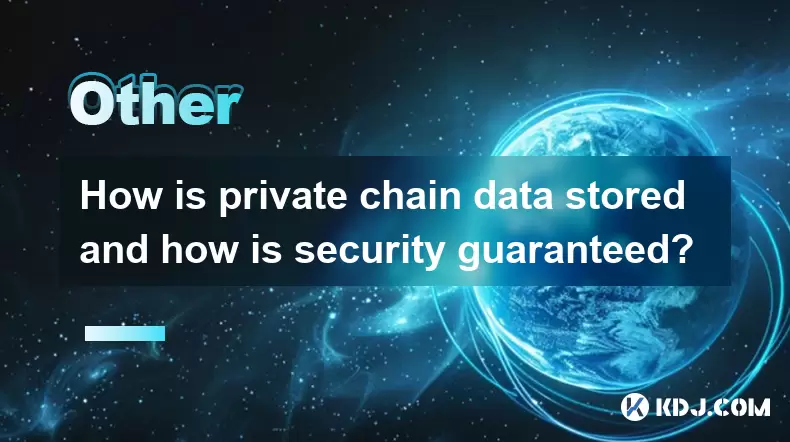-
 Bitcoin
Bitcoin $114800
-3.31% -
 Ethereum
Ethereum $3641
-5.84% -
 XRP
XRP $2.948
-6.36% -
 Tether USDt
Tether USDt $0.9998
-0.03% -
 BNB
BNB $772.4
-3.97% -
 Solana
Solana $169.1
-6.68% -
 USDC
USDC $0.9999
-0.01% -
 Dogecoin
Dogecoin $0.2056
-8.09% -
 TRON
TRON $0.3247
-0.18% -
 Cardano
Cardano $0.7239
-7.43% -
 Hyperliquid
Hyperliquid $39.71
-8.60% -
 Stellar
Stellar $0.3912
-7.84% -
 Sui
Sui $3.510
-10.17% -
 Chainlink
Chainlink $16.59
-8.03% -
 Bitcoin Cash
Bitcoin Cash $560.5
-3.65% -
 Hedera
Hedera $0.2464
-10.08% -
 Avalanche
Avalanche $22.03
-7.87% -
 Ethena USDe
Ethena USDe $1.001
-0.02% -
 UNUS SED LEO
UNUS SED LEO $8.947
0.21% -
 Toncoin
Toncoin $3.389
-2.58% -
 Litecoin
Litecoin $104.9
-5.23% -
 Shiba Inu
Shiba Inu $0.00001220
-6.67% -
 Polkadot
Polkadot $3.652
-6.10% -
 Uniswap
Uniswap $9.213
-9.05% -
 Monero
Monero $307.2
-2.93% -
 Dai
Dai $0.9998
-0.02% -
 Bitget Token
Bitget Token $4.367
-2.89% -
 Cronos
Cronos $0.1374
-6.80% -
 Pepe
Pepe $0.00001056
-8.65% -
 Aave
Aave $257.3
-7.31%
How is private chain data stored and how is security guaranteed?
Private chains offer controlled data storage and enhanced security through encryption, access control, and off-chain solutions, tailored for organizational needs.
May 16, 2025 at 03:28 am

In the realm of blockchain technology, private chains offer a unique approach to data storage and security, tailored specifically for organizations that require more control over their data. This article delves into the intricacies of how private chain data is stored and the mechanisms in place to guarantee its security.
Understanding Private Chains
Private chains, also known as permissioned blockchains, are networks where access is restricted to a select group of participants. Unlike public blockchains, where anyone can join and participate, private chains are controlled by a single entity or a consortium of entities. This control allows for more stringent security measures and tailored data storage solutions.
Data Storage in Private Chains
In private chains, data storage is managed through a distributed ledger, similar to public blockchains. However, the key difference lies in the access control and data privacy. Here's how data is typically stored:
Nodes and Consensus: Each participant in the private chain operates a node. These nodes store a copy of the entire blockchain, ensuring data redundancy and availability. Consensus mechanisms, such as Practical Byzantine Fault Tolerance (PBFT) or Raft, are used to validate transactions and add them to the blockchain.
Data Encryption: To enhance security, data stored on private chains is often encrypted. This means that even if an unauthorized party gains access to the data, they would need the decryption keys to make sense of it. Encryption algorithms like AES (Advanced Encryption Standard) are commonly used.
Off-Chain Storage: For large datasets, private chains may employ off-chain storage solutions. This involves storing the actual data off the blockchain while keeping a reference or hash on the chain. This approach helps in managing the size of the blockchain while maintaining data integrity.
Security Mechanisms in Private Chains
Ensuring the security of data on private chains involves multiple layers of protection. Here are the key mechanisms:
Access Control: One of the primary security features of private chains is strict access control. Only authorized participants can join the network and interact with the data. This is managed through identity verification and authentication protocols.
Network Security: Private chains often operate within a secure network environment. Firewalls, intrusion detection systems, and secure communication protocols like TLS (Transport Layer Security) are used to protect the network from external threats.
Smart Contract Security: Smart contracts, which automate transactions and enforce rules on the blockchain, are a critical component of private chains. Auditing and testing these smart contracts for vulnerabilities is essential to prevent exploits and ensure the integrity of the system.
Data Integrity: To ensure that data on the blockchain remains unaltered, cryptographic hash functions are used. Each block contains a hash of the previous block, creating a chain of blocks that is extremely difficult to tamper with.
Case Study: Hyperledger Fabric
To illustrate how private chain data storage and security work in practice, let's look at Hyperledger Fabric, a popular platform for building private blockchains.
Modular Architecture: Hyperledger Fabric's modular architecture allows organizations to customize their blockchain according to their specific needs. This includes choosing the consensus mechanism, membership services, and smart contract languages.
Channels: Fabric introduces the concept of channels, which allow for private communication and transactions between subsets of participants. This enhances data privacy and security by ensuring that only relevant parties have access to certain data.
Membership Services: Fabric uses a Membership Service Provider (MSP) to manage identities and permissions. This ensures that only authorized entities can participate in the network and access the data.
Ledger and State Database: The ledger in Hyperledger Fabric consists of a blockchain to store the transaction log and a state database to maintain the current state of the ledger. This dual structure enhances the efficiency of data retrieval and management.
Practical Implementation of Private Chain Security
Implementing security measures in a private chain involves several practical steps. Here's a detailed guide on how to set up and secure a private chain:
Setting Up the Network:
- Choose a private blockchain platform like Hyperledger Fabric or Corda.
- Install the necessary software and dependencies on the nodes that will participate in the network.
- Configure the network topology, including the number of nodes and their roles (e.g., orderer, peer).
Configuring Access Control:
- Define the roles and permissions for each participant in the network.
- Implement an identity management system to authenticate and authorize users.
- Use certificates and digital signatures to ensure secure communication between nodes.
Implementing Data Encryption:
- Choose an encryption algorithm suitable for your data (e.g., AES-256).
- Encrypt sensitive data before storing it on the blockchain.
- Store encryption keys securely, preferably in a Hardware Security Module (HSM).
Securing Smart Contracts:
- Write smart contracts in a secure programming language like Solidity or Go.
- Conduct thorough testing and auditing of smart contracts to identify and fix vulnerabilities.
- Use formal verification tools to mathematically prove the correctness of smart contracts.
Monitoring and Auditing:
- Implement logging and monitoring systems to track network activity and detect anomalies.
- Regularly audit the blockchain and smart contracts to ensure compliance with security standards.
- Conduct penetration testing to identify and address potential security weaknesses.
Frequently Asked Questions
Q: Can private chains be integrated with public blockchains?
A: Yes, private chains can be integrated with public blockchains through various interoperability solutions. For example, sidechains or cross-chain protocols can be used to enable communication and data transfer between private and public networks. This allows organizations to leverage the benefits of both types of blockchains while maintaining control over sensitive data.
Q: How do private chains handle scalability issues?
A: Private chains often have better scalability compared to public blockchains due to their controlled environment. Techniques such as sharding, where the blockchain is divided into smaller, more manageable pieces, and off-chain processing can be used to enhance scalability. Additionally, the choice of consensus mechanism can significantly impact the performance and scalability of a private chain.
Q: What are the costs associated with maintaining a private chain?
A: The costs of maintaining a private chain can vary depending on several factors, including the size of the network, the complexity of the smart contracts, and the level of security required. Key costs include hardware and infrastructure, software development and maintenance, and ongoing operational expenses such as node management and security audits. Organizations must carefully assess these costs against the benefits of using a private chain for their specific use case.
Q: How can data privacy be ensured in a private chain?
A: Data privacy in a private chain is ensured through several mechanisms. Encryption of data at rest and in transit, access control to limit who can view or interact with the data, and the use of private channels or subnets to segregate sensitive information are key strategies. Additionally, implementing robust identity and access management systems helps in maintaining the confidentiality of data within the network.
Disclaimer:info@kdj.com
The information provided is not trading advice. kdj.com does not assume any responsibility for any investments made based on the information provided in this article. Cryptocurrencies are highly volatile and it is highly recommended that you invest with caution after thorough research!
If you believe that the content used on this website infringes your copyright, please contact us immediately (info@kdj.com) and we will delete it promptly.
- Bitcoin, Ethereum, and Investor Behavior: A New York Minute on Crypto Trends
- 2025-08-01 15:10:12
- Tether's Q2 Triumph: USDT Supply Soars Amidst Profit Surge!
- 2025-08-01 15:10:12
- Ethereum ETF Holdings: A Corporate Treasury Revolution?
- 2025-08-01 15:30:12
- Ethereum's Wild Ride: Funding Rates, Price Drops, and Retail to the Rescue!
- 2025-08-01 15:30:12
- Ethereum Under Pressure: Crypto Market Drop Explained
- 2025-08-01 15:35:11
- Ethereum ETF Mania: Inflows Surge, Market Rises, What's Next?
- 2025-08-01 15:35:11
Related knowledge

How to start a business using blockchain?
Jul 28,2025 at 12:36am
Understanding the Basics of Blockchain TechnologyBefore diving into the process of starting a business using blockchain, it's crucial to understand wh...

What is a token on the blockchain?
Jul 21,2025 at 07:00am
Understanding the Concept of a TokenIn the realm of blockchain technology, a token is a digital representation of an asset or utility that exists on a...

Can blockchain be used for identity verification?
Jul 18,2025 at 02:14pm
Understanding Identity Verification in the Digital AgeIn the modern digital landscape, identity verification has become a critical component for ensur...

What is a consensus mechanism in blockchain?
Jul 21,2025 at 03:01am
Understanding the Basics of Consensus MechanismsA consensus mechanism is a critical component of any blockchain network. It refers to the process by w...

How to explain blockchain to someone with no tech background?
Jul 18,2025 at 11:08pm
Understanding the Basics of BlockchainTo explain blockchain to someone with no tech background, it's essential to start with simple analogies and avoi...

Who invented blockchain technology?
Jul 23,2025 at 01:28am
Origins of Blockchain TechnologyBlockchain technology did not emerge from a single inventor or institution. Instead, it evolved through a series of ac...

How to start a business using blockchain?
Jul 28,2025 at 12:36am
Understanding the Basics of Blockchain TechnologyBefore diving into the process of starting a business using blockchain, it's crucial to understand wh...

What is a token on the blockchain?
Jul 21,2025 at 07:00am
Understanding the Concept of a TokenIn the realm of blockchain technology, a token is a digital representation of an asset or utility that exists on a...

Can blockchain be used for identity verification?
Jul 18,2025 at 02:14pm
Understanding Identity Verification in the Digital AgeIn the modern digital landscape, identity verification has become a critical component for ensur...

What is a consensus mechanism in blockchain?
Jul 21,2025 at 03:01am
Understanding the Basics of Consensus MechanismsA consensus mechanism is a critical component of any blockchain network. It refers to the process by w...

How to explain blockchain to someone with no tech background?
Jul 18,2025 at 11:08pm
Understanding the Basics of BlockchainTo explain blockchain to someone with no tech background, it's essential to start with simple analogies and avoi...

Who invented blockchain technology?
Jul 23,2025 at 01:28am
Origins of Blockchain TechnologyBlockchain technology did not emerge from a single inventor or institution. Instead, it evolved through a series of ac...
See all articles

























































































